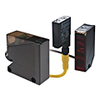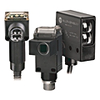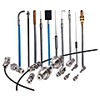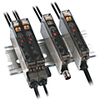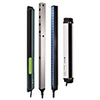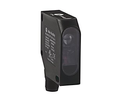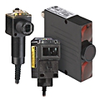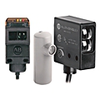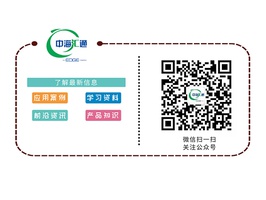
Photoelectric Sensors

Our Background Suppression Photoelectric Sensors are designed for applications requiring the sensor to see a target very close to a reflective background. This background suppression is particularly effective when the target and background have similar reflectivity (for example, light returned to the sensor from the target is roughly e...
We offer a variety of Color & Contrast Photoelectric Sensors. From true RGB color recognition sensors designed for industrial use to sensors to detect registration marks and a wide range of background colors, including difficult pastels, we make color/contrast sensors to meet your applications needs.
Fiber optic cables are essentially light pipes that attach to a fiber optic sensor. Light emitted from the sensor travels through transparent fibers in the cables and emerges at the end of the fiber. The transmitted or reflected beam is carried back to the receiver through different fibers. Our fiber optic cables are ideal for sensing ...
Our Fiber Optic Sensors are suited for packaging applications that require detection of very small objects, parts verification in hard to reach areas, color mark registration, and more. Our sensors consist of a light amplifying unit and a fiber optic cable that you can install at the detection area allowing for remote sensitivity adjus...
Our Series 5000 Hazardous Location Sensors consist of two major components: a photohead and a power base. The photohead that houses most of the electronics can be quickly removed from the power base with a turn of a single screw. These sensors are designed for Class I, II, and III; Division 1 and 2, Groups A, B, C, D, E, F, and G hazar...
Light Array Sensors combine multiple emitter or receiver elements into a single housing to create a sensing field instead of a single sensing beam. Therefore, these sensors can detect targets over a wider area. This makes the arrays ideal for detecting oddly shaped parts, products with gaps or spaces, or inconsistently positioned targe...



